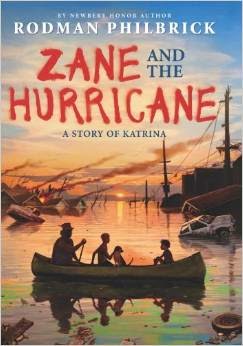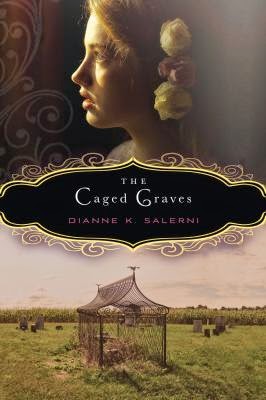Since I am
a complete history geek, I could probably reuse this title for my next several
posts: “My Love Affair with Russian History”, “My Love Affair with Marco Polo, “My
Love Affair with the Mongols -- Except for Genghis Khan”. And, if you’ve read
my previous blogs, you’ll note my passion for American labor history and any
other sort of rabble-rousing. But for now, I’ll confine myself to the Romans.
Did I say
“confine”? How ridiculous! We are talking about an empire that spans about
1,000 years (if you don’t count Byzantium), and includes mad emperors,
gladiators, Vestal Virgins, working class heroes, and loads and loads of
surprises. But I will confine myself in this post to Roman Britain and the
grand dame of historical fiction for young people written about Roman Britain,
Rosemary Sutcliff.
Sutcliff
was publishing from the late 1950's until her death in the 1990's. I’m focusing
on her Aquila series, The Eagle of the
Ninth, The Silver Branch and The
Lantern Bearers, which won the Carnegie Medal in the UK. This trilogy follows young men in the Aquila family from the
early years of Roman settlement until the last crumbling embers of the empire
and the Saxon invasions. They are adventure stories, but so much more.
The Eagle of the Ninth features the engaging Marcus
Flavius Aquila, a young Roman soldier stationed in the remote and barbaric
Roman province of Britannia. When Marcus was a child, his father disappeared,
along with the mysterious and cursed Ninth legion, somewhere
north of Agricola’s wall in modern-day Scotland. Marcus wants nothing more
than to follow in father’s footsteps and become a legionary commander.
However, he is forced to give up his military command when he is lamed in battle. With his dream in tatters, the one thing that gives his life purpose is redeeming his father’s name from the charges of treason and cowardice which have been leveled against the Ninth Legion ever since their disappearance.
However, he is forced to give up his military command when he is lamed in battle. With his dream in tatters, the one thing that gives his life purpose is redeeming his father’s name from the charges of treason and cowardice which have been leveled against the Ninth Legion ever since their disappearance.
Along with
Esca, a British slave who Marcus saves from death in the gladiators' ring,
Marcus journeys north of the wall, into territory not controlled by the Romans, to seek the truth about his father. Using clever disguises, his knack for gaining
people’s trust, and a growing understanding of
British tribal culture gained from Esca, he risks life and limb to discover the
secret of the lost legion and to recover the Eagle of the Ninth, the legion’s
standard and symbol of its honor.
None of
this is a plot that couldn’t be written by someone else. It is the way it is written that is remarkable. Sutcliff writes with amazing conviction. Her descriptions of nature are breathtaking,
and the details of human interactions are nuanced and revealing. But it’s even
more than that. The Roman world she creates just breathes. It is so convincing,
and the way the characters see the world is so distinctly different and yet
recognizable that you trust the authenticity. There’s no feeling of “these are
modern people dressed up in period costume”. These are Romans colonists and
British tribespeople. You suspend your disbelief.
Sutcliff
has an affinity for soldiers’ lives. Her battle and action scenes are
so immediate that you imagine she somehow experienced them. This is all the
more remarkable because Sutcliff was afflicted with a disease that left her in
a wheelchair for most of her life. In a wonderful interview, Sutcliff describes the soldiers in her novels as close in spirit to the World War
I soldier-poets like Siegfried Sassoon and Wilfred Owens: men of action who are
also deeply concerned with human development and sensitive to beauty. (Here's the link: http://d.lib.rochester.edu/camelot/text/interview-with-rosemary-sutcliff).
This shows
through especially in the realizations Marcus has about the culture clash between
his Roman imperial culture and that of the native Britons.
Look at the argument Marcus has with Esca over the designs
on a Roman dagger and a British shield-boss. Marcus claims that they were both
made by British artisans and therefore are essentially the same in spirit.
The reader understands the subtext of his remark: conquered people can and should accommodate
themselves to seeing life through the eyes of their conquerors.
Esca, however, insists on the differences. He notes how the design on the dagger is perfectly balanced and accomplished -- what we’d now call classical: “It is beautiful, yes. But to me it is as meaningless as an unlit lamp”.
Esca, however, insists on the differences. He notes how the design on the dagger is perfectly balanced and accomplished -- what we’d now call classical: “It is beautiful, yes. But to me it is as meaningless as an unlit lamp”.
 He shows Marcus the British
shield-boss (imagine Iron-Age
British art, like the Battersea shield shown on the right) and explains: “See the bulging curves
that flow from each other as water flows from water and wind from wind, as the
stars turn in the heavens and blown sand drifts into dunes.” Marcus, for the
first time, gets a sense of the spirit of these “barbarians”.
He shows Marcus the British
shield-boss (imagine Iron-Age
British art, like the Battersea shield shown on the right) and explains: “See the bulging curves
that flow from each other as water flows from water and wind from wind, as the
stars turn in the heavens and blown sand drifts into dunes.” Marcus, for the
first time, gets a sense of the spirit of these “barbarians”. But Esca isn't satisfied. He goes on to tell Marcus something that no Roman, in all his assumed superiority, wants to hear: “You cannot expect the man who made this shield to live easily under the rule of the man who worked the sheath of this dagger.” (93)
One of the
great pleasures of the book is the growing understanding, respect and affection
between the two young men.
I would encourage anyone who loves excellent historical fiction to dive into this series so they can
start a love-affair with Rome as well.
If you can recommend any wonderful historical fiction set in the ancient Roman world, leave the
title in your comments. And –
full disclosure – I am fiddling around writing a story about a girl
training to be a doctor in ancient Rome. And, yes, in case you’re wondering, some girls could!
Louise Spiegler is the author of The Amethyst Road (Clarion) and The Jewel and the Key (Clarion). She teaches English and History at the University of Washington, Bothell, and Cascadia College.
Louise Spiegler is the author of The Amethyst Road (Clarion) and The Jewel and the Key (Clarion). She teaches English and History at the University of Washington, Bothell, and Cascadia College.





.jpg)

























